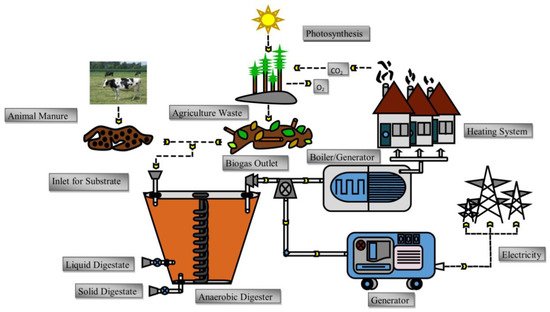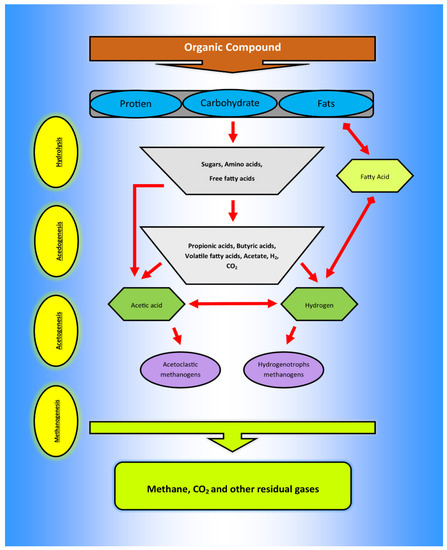1000/1000
Hot
Most Recent

Nanotechnology has an increasingly large impact on a broad scope of biotechnological, pharmacological and pure technological applications. The novel notion of dosing ions using modified nanoparticles can be used to progress up biogas production in oxygen free digestion processes.


|
NPs Type |
NP size |
Concentration |
Feedstock |
Temperature |
Incubation Time |
Effect |
|---|---|---|---|---|---|---|
|
CeO2 |
192 nm |
10 mg/L |
Sludge from UASB reactor |
30 °C |
40 |
11% Increase in biogas production [33] |
|
Fe3O4 |
7 nm |
100 ppm |
Waste water Sludge |
37 °C |
60 |
180% Increase in biogas production and 234% increase in methane [35] |
|
Fe/SiO2 |
105 mol/L |
– |
55 °C |
– |
7% Increase in methane production [36] |
|
|
Pt/SiO2 |
– |
105 mol/L |
– |
55 °C |
– |
7% Increase in methane production [36] |
|
Co/SiO2 |
– |
105 mol/L |
– |
55 °C |
– |
48% Increase in methane production [36] |
|
Ni/SiO2 |
– |
105 mol/L |
– |
55 °C |
– |
70% Increase in methane production [36] |
|
Co |
28 nm |
1 mg/L |
fresh raw manure |
37 °C |
40 |
71% increase in biogas production |
|
45.92% increase in methane production [37] |
||||||
|
Ni |
17 nm |
2 mg/L |
fresh raw manure |
37 °C |
40 |
78.53% increase in biogas production |
|
116.76% increase in methane production [37] |
||||||
|
Fe |
9 nm |
20 mg/L |
fresh raw manure |
37 °C |
40 |
47.7% increase in biogas production |
|
67% increase in methane production [37] |
||||||
|
Fe3O4 |
7 nm |
20 mg/L |
fresh raw manure |
37 °C |
40 |
73% increase in biogas production |
|
115.66% increase in methane production [37] |
||||||
|
ZnO |
140 nm |
1 mg/g-TSS 10 mg/g-TSS 50 mg/g-TSS |
WAS AGS |
35 °C |
40 105 |
No effect [38] No effect [39] No effect [39] |
|
nZVI |
<50 nm |
10 mg/g-TSS |
WAS |
37 °C |
30 |
120% increase in methane production [40] |
|
Fe2O3 |
<30 nm |
100 mg/g-TSS |
WAS |
37 °C |
30 |
117% increase in methane production [40] |